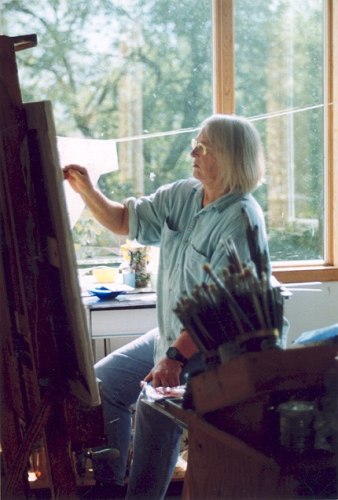

Over the last fifty years, Janet Fish has drawn on her embrace of change and her belief in the underlying interconnectedness of things to fuel her remarkable painting practice. She philosophizes that to stop changing is to die, a conviction that drives her unending formal experimentation and her mastery of multiple genres. Change inhabits each painting as well. The objects that serve as armatures for color and light in her work are exuberant in their state of flux. The long conceptual, formal, and iconographic history of the still life genre confirms our own experience. Though the artist works against the idea of capturing a photographic instant, she preserves a mood, a quality of light, and a sense of place to which we can continually return.
In 1963 Janet Fish received her MFA from Yale, where her fellow students included Chuck Close, Rackstraw Downes, Nancy Graves, Robert Mangold, Sylvia Plimack Mangold, and Richard Serra, a tight-knit group who formed an intense, ambitious, competitive cohort that motivated one another to develop and defend their work. After graduation Fish moved to New York City. Her paintings from the late 60s and early 70s, studies of transparent objects, begin a life-long preoccupation with the nature and substance of light. From the beginning, Fish focused on commonplace objects, insisting that her subject matter, glasses, fruits covered in supermarket cellophane, or liquid filled containers, was unimportant. For Fish the subject matter or story line, is of the least importance, for her meaning is determined by tone, gesture, color, light, and scale.
Fish’s work is in the collections of numerous institutions including, Albright-Knox Gallery, Buffalo; American Academy and Institute of Arts and Letters, New York; Art Institute of Chicago; Cleveland Museum of Art; Dallas Museum of Fine Arts; Metropolitan Museum of Art, New York; Museum of Fine Arts, Boston’ Whitney Museum of American Art, New York; Yale University Art Gallery, New Haven.